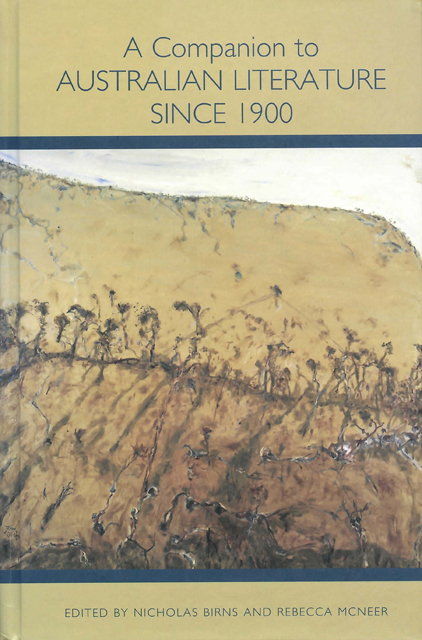Book contents
- Frontmatter
- Dedication
- Contents
- Chronology of Main Events in Australian History, 1901–2005
- Acknowledgments
- Note on the Cover Illustration and Artist
- Introduction
- Part 1 Identities
- Part 2 Writing Across Time
- Part 3 International Reputations
- Part 4 Writers and Regions
- Part 5 Beyond the Canon
- Notes on the Contributors
- Index
29 - Environmental Themes in Australian Literature
Published online by Cambridge University Press: 10 March 2023
- Frontmatter
- Dedication
- Contents
- Chronology of Main Events in Australian History, 1901–2005
- Acknowledgments
- Note on the Cover Illustration and Artist
- Introduction
- Part 1 Identities
- Part 2 Writing Across Time
- Part 3 International Reputations
- Part 4 Writers and Regions
- Part 5 Beyond the Canon
- Notes on the Contributors
- Index
Summary
Engagement with the environment is a pervasive presence in Australian literature, so much so that discussions of landscape and place have for years informed critical debate. As T. Inglis Moore writes in his Social Patterns in Australian Literature, the Australian environment has been the “background of the nation’s story, … home of its heroes, the maker of its ideals, and the breeding ground of its myths” (68). During the twentieth century, however, a departure from the “bush tradition” occurred as writers began a deeper engagement with the environment, drawing on broader social, political, and scientific debates. Two strands of this development that I will discuss in this chapter are the Jindyworobaks’ theories of “environmental value” — the attempt to indigenize ecological writing — and the knowledge that developed in the ecological sciences. A number of writers combine and extend these strands in various ways that have yet to be commented on by scholars of Australian literature.
P. R. Stephenson’s The Foundations of Culture in Australia (1936) rather abrasively rejects the importation of foreign ideas, values, and economic interests, with a corresponding focus on local distinctiveness and regionalism. In an article in the The Publicist (1938) he sought to ground what he termed a national “cultural resurgence” in the “Spirit of the Land, the genius loci” (8). The article echoes the writings of Xavier Herbert, which is no surprise given Stephenson’s somewhat fraught involvement in the editing and publication of Capricornia (De Groen, 91). Foundations of Culture in Australia also influenced Rex Ingamells, the founder of the Jindyworobak movement, providing the basis for his discussion of environmental aesthesis in his Conditional Culture (1938). In the work of Herbert and the Jindyworobaks, we find engagement with ideas promulgated by Stephenson and developed in the Publicist, yet with a distinctly environmental emphasis.
Central to the Jindyworobak project was the notion of artists overcoming what Ingamells termed in his Conditional Culture the “pseudo- Europeanisms” that, he argues, prevented Australians from developing a “free appreciation of nature” (5).
- Type
- Chapter
- Information
- A Companion to Australian Literature since 1900 , pp. 429 - 444Publisher: Boydell & BrewerPrint publication year: 2010

